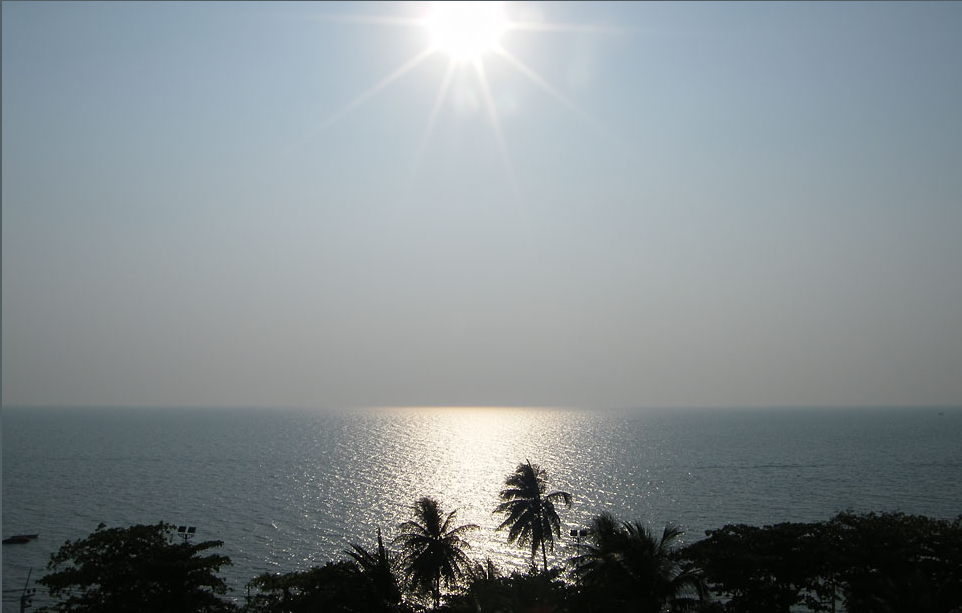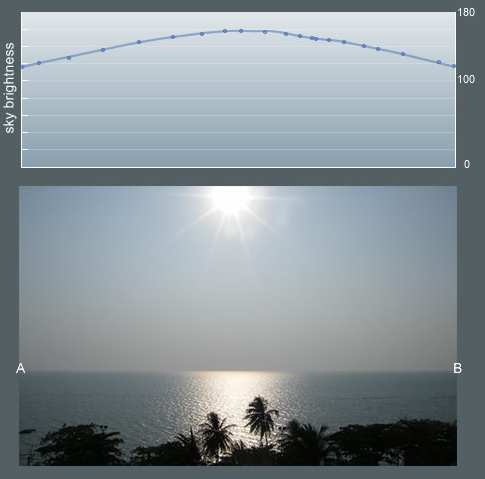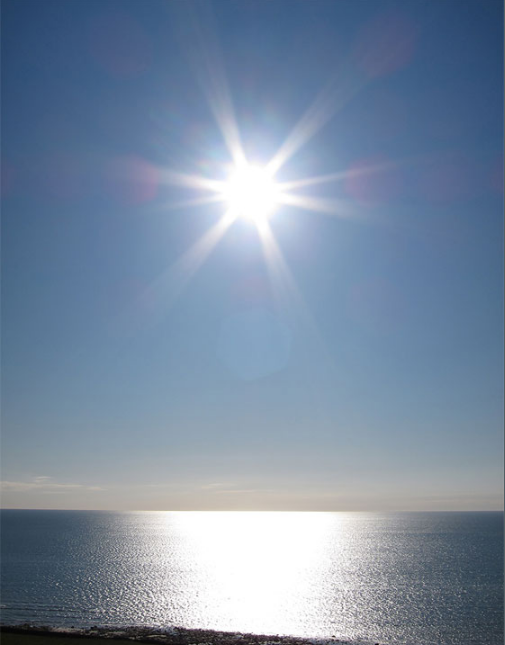OPOD - Dark sky illusion
The Dark Sky Illusion: Exploring the Phenomenon
Have you ever noticed that the sky above the glittering sea and near the horizon appears darker than elsewhere? This intriguing visual effect, known as the dark sky illusion, has captivated the attention of many observers. As we delve deeper into this phenomenon, we will explore its characteristics, examine photographs, and consider whether it is a genuine optical illusion or a trick of perception.
One observer, Ian Jacobs from Science at NSM, was so intrigued by the seemingly darker sky that he intentionally captured photographs of it during his visit to Pattaya, Thailand. The location provided the perfect backdrop for this illusion to manifest itself prominently. Meanwhile, Stephen Gledhill, an independent observer from Wales, also experienced this intriguing phenomenon and documented it with his own photographs.
To better understand the dark sky illusion, let's examine the measurements of sky brightness along a line just above the horizon. These measurements, represented in a graph, demonstrate that the sky is actually lighter rather than darker over the glitter path. While the brightness scale may not be directly proportional to the true sky brightness due to camera and image processing characteristics, it provides strong evidence supporting the notion that the darkening effect is an illusion.
Contrast illusions, where adjacent areas of different brightness create the perception of darkness or lightness, are well-known phenomena. Painters often exploit these illusions to enhance their artwork. The dark sky illusion appears to be a variation of this concept, where the brightness of the sky near the glitter path creates an optical illusion of darkness when juxtaposed against a brighter area.
It is important to recognize that what we perceive through our eyes or a camera lens may not always align with reality. Nature's vibrant colors and light effects can deceive us if we are not observant and skeptical. By cultivating a keen eye and a questioning mind, we can fully appreciate the wonders of the world and better understand the complexities of visual perception.
Interestingly, both Ian Jacobs and Stephen Gledhill noted the presence of clouds or haze near the horizon during their observations. This raises the possibility that these atmospheric conditions may contribute to the visibility and intensity of the dark sky illusion. Jacobs even suggests that clearer skies may not exhibit the illusion as prominently as hazy or cloudy ones.
In conclusion, the dark sky illusion continues to captivate observers around the world. Through photographs and measurements, we have gained valuable insights into this intriguing phenomenon. While it may appear as though the sky above the glitter path is darker, it is actually lighter, creating a contrast illusion. By questioning our perceptions and remaining curious, we can unravel the mysteries of optical phenomena and deepen our appreciation for the marvels of the natural world.

Sky Illusion
The sea beneath the sun has a bright glitter path. The sky above it and near the horizon looks darker than elsewhere. The effect gets more noticeable farther from the monitor.
Now mouse over the image to replace the sea with a uniform rectangle. The sky is now brighter immediately over where the glitter path was situated.
Ian Jacobs (Science at NSM) saw the apparently darker sky, thought it was an illusion and photographed it deliberately. Location - Pattaya, Thailand.
©Ian Jacobs, shown with permission
An independent Welsh view of the illusion by Stephen Gledhill is below.

Left:
Point measurements of the sky brightness along a line AB just above the horizon.
Measurements were made in PhotoShop after converting to a grey scale image.
The brightness scale is not necessarily linearly related to the actual sky as it depends on the camera CCD and image processing characteristics. However, the graph is reasonable evidence that the sky is actually lighter rather than darker over the glitter path.
The effect is apparent visually and on photographs. Is it real or an illusion by the eye/brain? The sky pixel brightness measurements and effect of masking the sea are strong evidence that the darkening is an illusion.
Contrast illusions are well known. An area adjacent to a bright one appears darker than usual and vica versa. The illusion is deliberately exploited by painters.
What we, or a camera, see is not necessarily 'real'. Observation of nature's colour and light effects is helped by a keen eye and a questioning sceptical mind fired by a raptness for the marvels of the world.

The dark horizon illusion from Cardigan Bay, near Barmouth, Wales.
Stephen Gledhill (Virtually Grey Gallery) saw it by eye and captured images.
Mouse over the image to mask the sea and glitter path. The sky near the horizon then appears brighter under the sun rather than darker.
Both sightings had cloud or haze near to the horizon. Ian Jacobs suggests that this might make the illusion more obvious as he has looked for the illusion with clearer skies and not seen it.
Note: this article has been automatically converted from the old site and may not appear as intended. You can find the original article here.
Reference Atmospheric Optics
If you use any of the definitions, information, or data presented on Atmospheric Optics, please copy the link or reference below to properly credit us as the reference source. Thank you!
-
<a href="https://atoptics.co.uk/blog/opod-dark-sky-illusion/">OPOD - Dark sky illusion</a>
-
"OPOD - Dark sky illusion". Atmospheric Optics. Accessed on December 23, 2024. https://atoptics.co.uk/blog/opod-dark-sky-illusion/.
-
"OPOD - Dark sky illusion". Atmospheric Optics, https://atoptics.co.uk/blog/opod-dark-sky-illusion/. Accessed 23 December, 2024
-
OPOD - Dark sky illusion. Atmospheric Optics. Retrieved from https://atoptics.co.uk/blog/opod-dark-sky-illusion/.